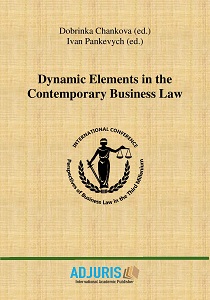The Professional Adequacy and the Performance of the Employee. Differences and Similarities
The Professional Adequacy and the Performance of the Employee. Differences and Similarities
Author(s): Ioana Cristina Cristescu
Subject(s): Human Rights and Humanitarian Law, Law on Economics
Published by: Societatea de Stiinte Juridice si Administrative
Keywords: performance; professional inadequacy; evaluation criteria; objectives; dismissal;
Summary/Abstract: The career path of the employee is complex and not without risks. Thus, achieving performance becomes the very reason for establishing individual employment relationships, as they determine the collective performance of the organization and determine the success of the business. Therefore, the concern for performance is present at all times preceding the employment, during the probation period and during the execution of the individual employment agreement and culminates with the solution of a supreme dilemma when dismissing for professional inadequacy. The Labour Code itself requires various interpretations and clarifications in order to be able to transpose the concepts regarding employee performance. Therefore, the present study critically examines the doctrine in the matter, compares the legal texts and interpretation solutions of the courts and applies the common sense of human resources management to determine the way to be followed where the legislator is silent. Thus, the conclusion is clear that at all stages of the employment relationship the employer has in view the performance of the employee, but the objectives, criteria, methods of assessment and measurement are different, depending on the purpose of its evaluation and legal consequences and from the perspective of human resources management. The result of this study is a set of benchmarks regarding the evaluation of the performance and the evaluation of the professional adequacy, the interferences and delimitations between them and other related institutions, interpreted in a multidisciplinary context.
Book: Dynamic Elements in the Contemporary Business Law
- Page Range: 230-250
- Page Count: 21
- Publication Year: 2019
- Language: English
- Content File-PDF

